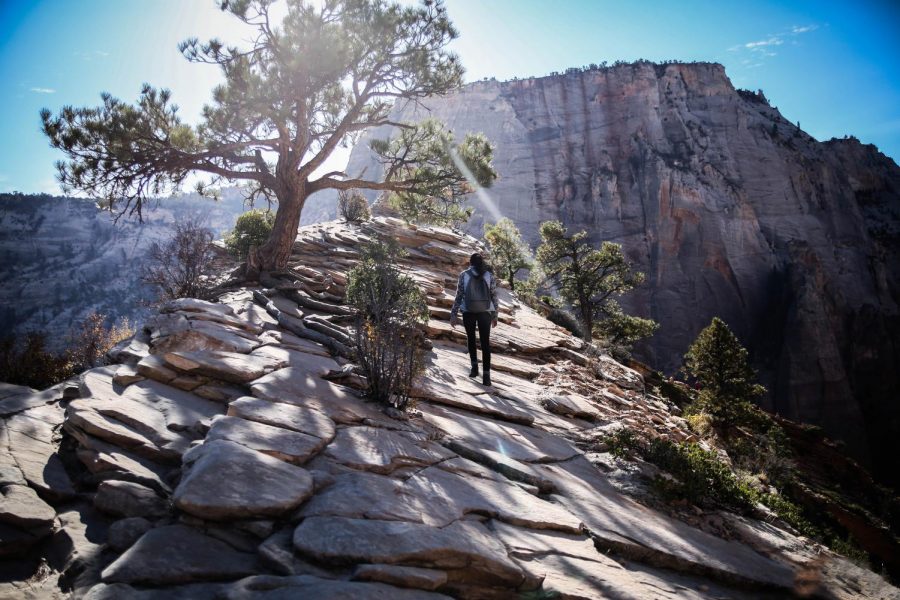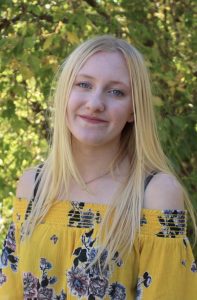Cushman: Utah Should Reopen Its National Parks
May 27, 2020
Unacast, a location data analysis firm, has given grades to each state in order to measure how well they have implemented health protocols to stop the spread of COVID-19. Utah scored a D, one letter grade above failing. Despite that low grade and concern about the risk of reopening the Utah economy, the state is moving forward with plans for a phased reopening of businesses. As some gyms and salons have started to once again allow in clients, Utah’s national parks have all also announced plans to open by the end of May. Despite those who worry over the reopening of Utah’s national parks, I believe that these parks should allow visitors in as the state moves forward in a phased reopening of the economy.
Social Distancing
Utah has moved toward slowly reopening the state because the governor and other state leaders believe that Utah is only at moderate risk if businesses and constituents follow health protocols. Public and health officials have all encouraged Utahns to wear masks and practice social distancing as the state moves forward, but as summer begins and more Utahns are eager to get out of their homes and into the nice weather, that could be a difficult task.
National parks are one of the few places that do not face extreme obstacles in promoting social distancing. Opening restaurants and salons have required strict guidance from local health authorities, with rules about table configurations and screening of employees before shifts. National parks, on the other hand, have ample room for social distancing. In a packed store, six feet of distance can be hard to maintain, but there is much more space in the outdoors. While I understand the fears that come with reopening tourist attractions, it makes little sense that national parks would remain closed while restaurants, gyms and salons are beginning to reopen despite the high risk of those public facilities.
Careful Reopening
While the openness of national parks does allow for greater social distancing, there are some unique challenges that parks will face as they begin to allow in summer visitors. Theresa Pierno, president of the National Parks Conservation Association, listed some of her concerns about reopening national parks. She explained that parks are designed to lead visitors to specific attractions, which can result in crowding. She also wrote that national parks are often in remote locations with little access to medical facilities, leaving localities under-prepared for the event of an outbreak. Having enough staff and other resources to implement safety measures was also a concern.
Pierno is absolutely right about the possible hazards of opening parks, but the National Park Service (NPS) and local health authorities are adopting protocols for safe reopening that would minimize those potential risks in the same way that other businesses are having to adopt safety measures. The White House, as well as Utah’s state government, has pushed for phased reopening plans based on the advice of public health officials. The NPS has made it clear that they plan to follow guidelines for phased reopening in the interest of public health. Reopening is a scary but inevitable path. There is a way to do it right and the NPS seems dedicated to that end. A spokeswoman for the NPS has explained that protective gear and masks will be made available to park rangers. Other precautions are also going to be taken. Bryce Canyon, for example, is opening with limited options, confining visitors to the main road and one hiking trail, as well as only having one bathroom open to the public. It is clear that consideration is being taken on how to safely open these parks to the public.
Reopening National Parks is Beneficial
Restricting our everyday lives has been necessary to control the transmission of COVID-19 and keep our communities safe. However, with little to no idea of when our lives will return to normal, it is important that we find a new normal. With some studies showing that this pandemic could last another two years, we have to find ways to function while also maintaining relative safety for high-risk populations. That means we have to reopen, but in a thoughtful manner and with restrictions to protect public safety.
As COVID-19 has kept people stuck in their homes and isolated, symptoms of mental health issues in the United States have dramatically increased, with many calling the trend a mental health crisis. Isolation and fear can cause deep psychological trauma, and the United States is ill-equipped to handle the rising number of anxiety and depression cases. National parks offer a unique strategy in mitigating mental health issues. Getting people out of the house and exercising regularly is a great way to reduce stress. Being in a natural setting can help lessen the symptoms of mood disorders like depression and anxiety. National parks can be opened relatively safely and offer a healthy and positive way for people to leave their homes and alleviate stress.
National parks are also a surprisingly massive part of Utah’s economy. With far more parks than the average state, national parks are a major part of Utah’s tourism industry, attracting Utahns and outsiders alike. In 2018 alone, national parks contributed $1 billion to the state’s economy. A phased reopening of Utah’s “mighty five” seems like a reasonably safe way to help mitigate the negative economic impacts of COVID-19 on the state.
It is inevitable that Utah will reopen. National parks are a major part of the state and reopening them is something that can be done with public health in mind. With minimal risk and massive benefits, opening our national parks is the right decision for Utah.
Editor’s note: Signs and symptoms of COVID-19 include fever, dry cough, tiredness and shortness of breath. These symptoms are believed to occur between two and 14 days after a person is exposed to the disease. If you have these symptoms and have recently come into contact with a person who is known to have COVID-19, or if you have recently traveled to an area with community spread of the disease, you should call your doctor. Areas with community spread of COVID-19 are believed to include China, South Korea, Italy, Iran and Seattle. If you do not have a doctor who you visit regularly, please call the Utah Coronavirus Information Line at 1-800-456-7707 or the University of Utah Health hotline at 801-587-0712. Do not go to a healthcare facility without first making arrangements to do so.








